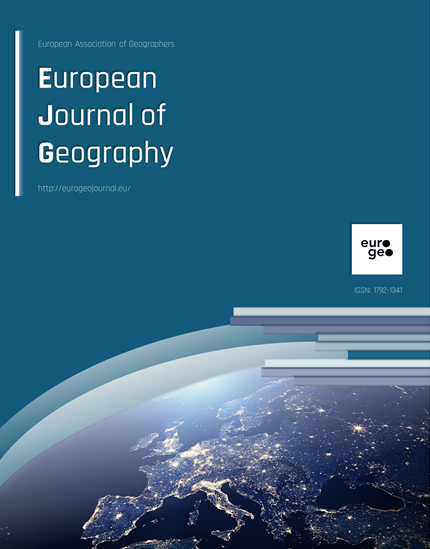Assessing the coastal vs hinterland divide by use of multitemporal data: Case study in Corinthia, Greece

Published 2022-04-12
Keywords
- Urban development,
- Coastal vs hinterland divide,
- Coastal areas,
- Multitemporal data,
- Global Human Settlement Layer
- Corinthia ...More
How to Cite
Copyright (c) 2022 European Journal of Geography

This work is licensed under a Creative Commons Attribution 4.0 International License.
Abstract
Escalating urban development in coastal zones is currently noticed in many regions around the globe, leading to unsustainable future pathways. This, among others, accounts for: land and marine ecosystems’ degradation; higher vulnerability to Climate Change impacts; and a largely uneven urban network pattern, raising issues of the ‘coastal vs mainland’ divide that hampers a balanced regional development. This holds true in the case study explored in this work, namely Regional Unit of Corinthia, Region of Peloponnese, Greece. This area, despite its natural and cultural assets and critical location as a transportation node in close proximity to Athens, displays certain spatial imbalances as to the coastal and hinterland urban expansion pattern that are linked also to developmental ones. Monitoring urban development by use of multi-temporal data for built-up areas can advocate the identification/assessment of important spatial dimensions of the aforementioned problems; and guide evidence-based policy decisions. Along these lines, this paper elaborates on the development of a methodology in response to the research question of quantifying urban development trends and assessing the “coastal vs hinterland” divide.




